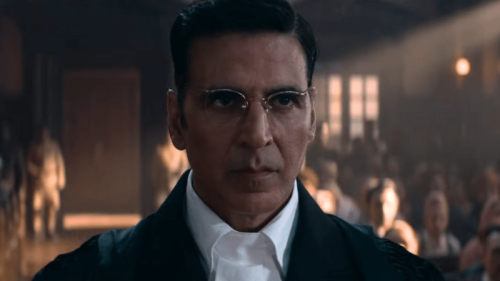Kesri Chapter 2 trailer came out; On Thursday, the photo will be shown on April 18, three days after the massacre anniversary.
Story and inspiration
Essence Dharma Production is ready to release Kesri Chapter 2, a film based on a court case after Akshay Kumar acting after the Jallianwala Bagh massacre of 1919, Annia Pandey And Madhun in several Bollywood historic drama films.
Raghu and Pushpa Plot’s book The Case kills the Empire: A man fighting for the truth on the massacre of Jalianwala Bagh is the basis of the film, which is brought to Sir Michael O’Der, former Governor of Punjab, and a master of the massacre by Sir Michael O’Der Nair.
After the allegations of slander of O Dior, after the release of a book on the crimes of British Raj in Punjab, the Nair.
Cast and character
- Akshay Kumar Sir Chatur Sankan Nair has been photographed.
- R Madhavon The British lawyer plays the role of defending O Dier.
- Annia Pandey In this case, another lawyer plays the role.
The trailer highlights
In the graphic trailer, the Indians were shown under the fire from the British Indian Army, the heads were cut off and the blood was flowing from the organs. People are jumping into the well to protect themselves.
Kumar’s comments on controversial dialogue
In the previous teaser trailer, Kumar’s feature used FBMB. He then discussed it with journalists.
Kumar is told of the Indian age that he used the term but thought of earlier talks – a British officer calls his character a “slave to the British Empire”. It’s more unpleasant.
British MP Bob Blackman last month requested the government to formally apologize for the massacre on the massacre.
I mentioned the tragedy of the Jailian Bagh today. On the X (formerly Twitter), I wrote: “I formally asked the government to apologize to the people of India before the anniversary of the atrocities.”
British Brigadier General Reijinald Dyer shot deadly, non -violent protesters who gathered a century ago in Jalianwala Bagh in Amritsar to celebrate the festival.
Horings were also quietly protesting against the Rollot Act, a British law that banned civil rights and demanded the release of two nationalist leaders, Saifuddin Kechlo and Sathapal.
On Sunday, April 13, 1919, in Jalianwala Bagh, 1,650 round weapons were fired on unarmed Indians.
The barbarism of the massacre
When 50 soldiers of the Baloch and Gorkha Regiment wandered around the crowd gathered there, the small entrance to the garden was interrupted.
Since the Adult Act had already eliminated the curfew in the city, even though many of the injured wanted to leave, they could not just get out of the premises from which the blood was flowing without any break.
Many of them who have probably survived were killed in their wounds.
Are dead figures – the number of hundreds – with every religion found in India – from 350 to 1,200 to 1,200; Many of the injured were not treated for a long time and passed due to their condition.
Dyer says his forces shot 1,650 rounds directly.
Colonial violence and heritage
Poet and essayist Harris Khaliq writes that it was a great tragedy and a particular British India of colonial violence moves beyond and beyond.










